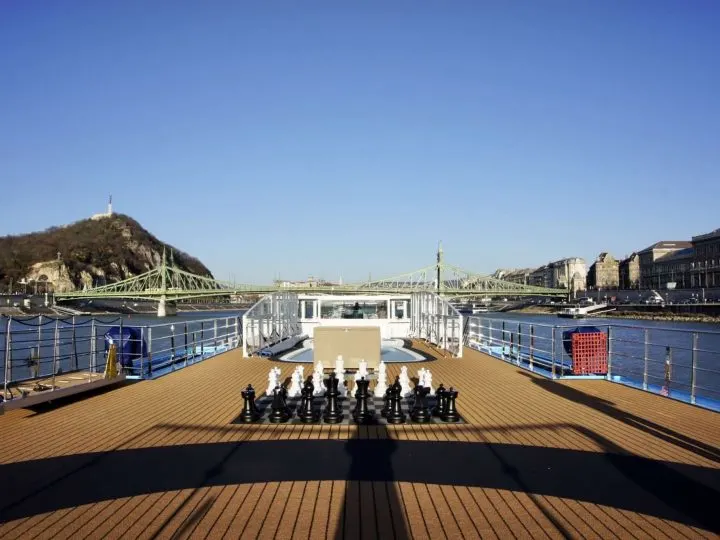Do you like the idea of time traveling through 10 countries and visiting central and eastern Europe’s most iconic capital cities like Vienna, Budapest, Bratislava and Bucharest? Then a Danube River cruise is perfect for you!
Between Danube River cities you’ll drink wines from ancient vineyards and visit 1000-year-old castles and abbeys. The romance of the Danube takes on a different tempo and melody as you cross from one region to the next. Silent Night and Edelweiss greets you in Salzburg; Mozart, Strauss, and other classical favorites tantalize in Vienna; Hungarian folk music gets you dancing in Budapest.
The Danube River is the Europe Union’s longest river. It flows 2,872 km (1,785 miles), beginning its journey in the town of Donaueschingen, in the Black Forest of Germany, and empties into the Black Sea via the Danube Delta in Ukraine and Romania. Cruising this river is one of the best ways for families to easily and conveniently see the region.
Read a comprehensive article which details the experience of an AmaWaterways Danube River Cruise.
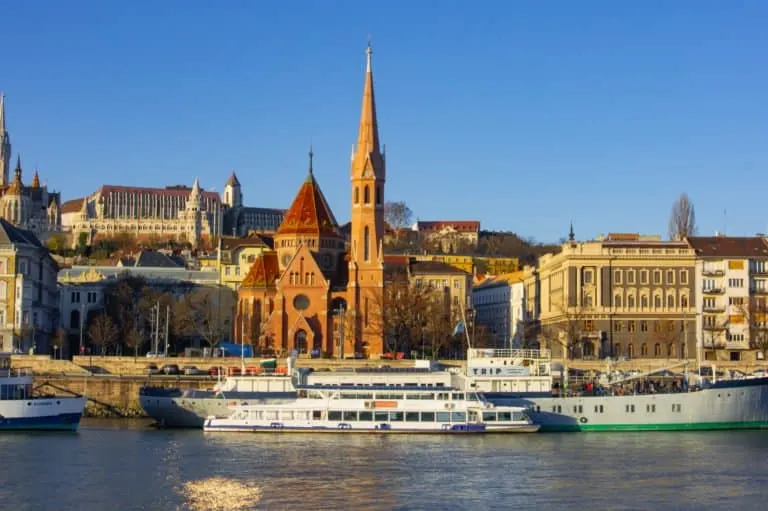
View of the Buda side of Budapest from the Danube River | Photo by Brennan Pang
Overview of What Danube River Cruises Offer
The recorded history of the Danube River dates way back to the time of the Greek and Roman Empires. Traveling along the Danube River is a history lover’s dream trip. I found it mind-blogging going on walking tours down streets thousands of years old. No wonder the Danube River was designated as a UNESCO World Heritage site.
During our Danube River cruise, we walked in the footsteps of giants. We drank coffee at Cafe Tomaselli in Salzburg, the very same cafe that Mozart spent many mornings in. We ate gingerbread at Wickelin Lebkuchen, a gingerbread bakery with a medieval recipe dating back to the 14th century. We marveled at the scores of ancient texts at the library at Melk Abbey.

Christmas Market at Thurn and Taxis Regensburg | Photo by LiLing Pang
The storied past of the Danube and her people comes alive in many different ways as you cruise down her shores. In Vilshofen’s, we listened to music composed several hundred years ago in St Stephen’s Cathedral with its 17,000-pipe organ. In Regensburg, we turned back time at the medieval-themed Christmas Market at the Thurn and Taxi’s Palace. In Vienna, the stories of this grand capital city are told through her magnificent architecture.
What is the Best Month to take a European River Cruise?
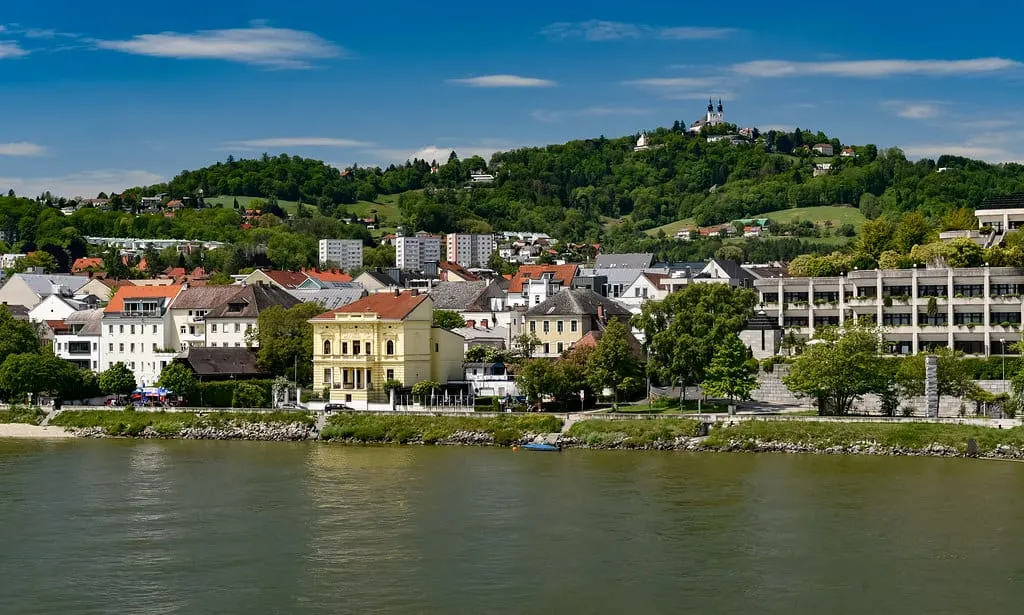
Danube River in the Spring – Linz, Germany | Photo by Jorge Franganillo
Spring on the Danube (March, April, May)
Springtime along the Danube can be a tad unpredictable. The days are longer. While there is more sunshine, you might also encounter rain.
March and April, some chilly days can be expected with highs generally in the 50’s °F (10°C), and lows in the 40’s °F (4°C).
May is lovely with highs in the 60’s °F (15°C) and lows in 50’s °F (10°C).
Melting snow in the mountains can flood parts of the Danube so you might encounter modifications on your itinerary. Typically, this would mean, getting to the cities that you can’t sail to by bus instead.
Summer on the Danube (June, July, August)

Danube River in the Summer- Passau, Germany | Photo by raymond_zoller
Long days and blue skies make summer the prettiest season in central Europe. The long days allow you to sightsee more, enjoy the outdoors, and capture beautiful photos of the region. However, popular sites are often crowded during this time of the year.
Summer days can also be warm with highs around 75°F (23°C) and lows averaging 63°F (17°C). Be sure to dress appropriately as you will be doing lots of walking and biking ashore. Towards the end of summer, the water-levels on the Danube can also fall too low for the ships to sail to certain ports.
Autumn (Fall) on the Danube (September, October and early November)
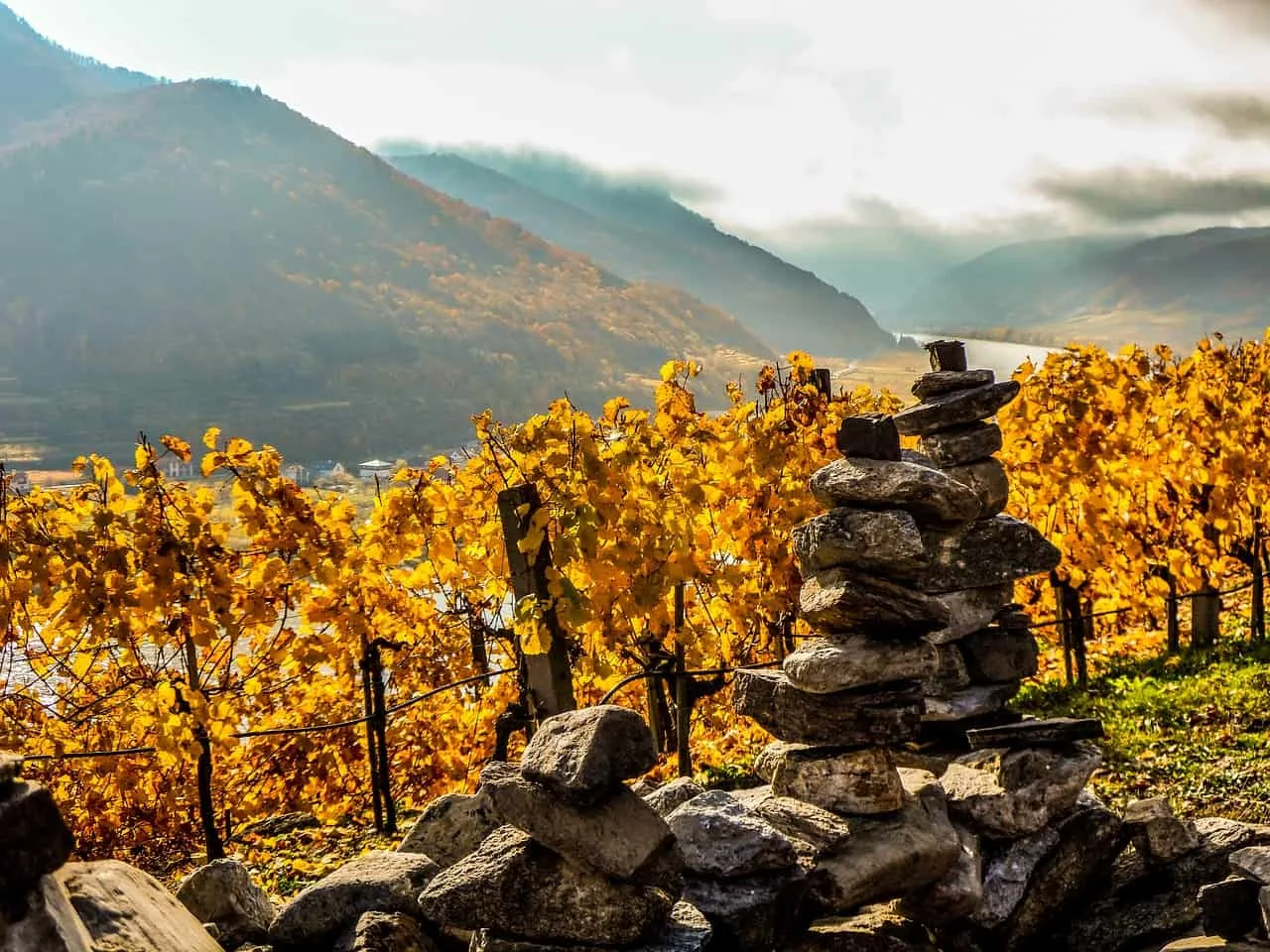
Danube River in the Autumn – Wachau Valley, Austria | Photo by KeitasWelt
Early Autumn on the Danube is probably the best time to visit. The days are still reasonably long, the temperatures are getting more comfortable, the tourist crowds have thinned out, and there are great deals and river cruise fares at this time of the year.
Late September and October day time highs are generally in the 60’s °F (15°C), and lows in the low 50’s °F (10°C).
In late October and early November, the days are getting short and day time temperatures drop to the 40’s °F (4°C), and lows can be at freezing point. Dressing in layers is important and in the evenings, you will need winter wear. You are also likely to encounter rain and gray skies.
Christmas Season on the Danube (Late November and December)
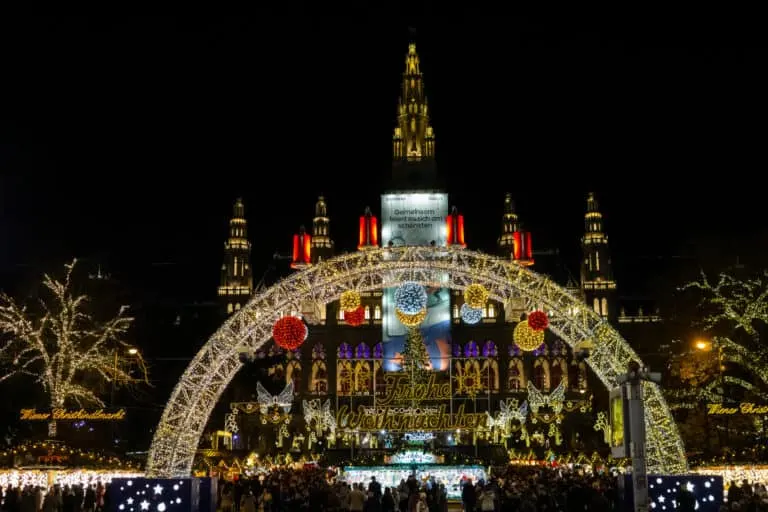
Rathaus Christmas Market in Vienna | Photo by Brennan Pang
At the end of November, many river cruise lines begin to run Christmas Market cruise itineraries with a lovely magical quality that varies from town to town. Every little town will be lighted up with Christmas twinkle and host at least one Christmas Market with lots of beautiful handmade ornaments and gifts. Regensburg, Salzburg, and Vienna are particularly remarkable at Christmas time.
Winter on the Danube (January and February)
It’s cold along the Danube in January and February. Most River Cruise lines do not run cruises during these months along the Danube. But it’s a great time to book a river cruise!
How Much is a River Cruise on the Danube?

Ama Viola in Budapest | Photo by Brennan Pang
River cruise pricing can be a little complicated. Most river cruises are all-inclusive while others have hidden costs. There are so many different upgrade options, room configurations, and pre and post-cruise add ons.
Some cruise lines offer very attractive discounted pricing if you book last minute or during the shoulder season (spring and autumn) while others even throw in airfare as an incentive.
Comparing pricing between cruise lines is even more confusing. Speaking with a knowledgeable river cruise specialist can be invaluable!
Some cruise lines offer short river cruise itineraries on the Danube for just 3 or 4 days, and there are also 10-14 day itineraries. But the most typical is a one-week cruises on the Upper Danube. You can expect to pay between range between $2,700 – $11,400 per person.
Here are some general guides for the 2020 River Cruising Fares from River Cruise Advisor.
- A-ROSA, CroisiEurope, and Riviera generally have the lowest fares under $3000 per person during both high and shoulder season.
- AmaWaterways, Avalon, Emerald, and UniWorld are comparably priced in the lower mid-range between $3,000- $3,600 in any season
- Tauk and Scenic are comparably priced in the higher mid-range – $3900-$4500 in any season
- Crystal is the high outlier in all seasons with prices ranging from $8,000-$11,400 with dramatic savings during the shoulder season.
Danube River Map and River Cruise Itineraries
If your grasp of central and eastern European geography is a little rusty, here’s a map of the Danube River. The Danube flows southeast crisscrossing 10 countries as follows:
The Upper Danube begins in Germany, then continues on through Austria, Slovakia, and Hungary. It keeps flowing east through the Lower Danube, crossing Croatia, Serbia, Bulgaria, and Romania. Then it brushes past Moldova, then sprawls over the Danube river basin in Ukraine, before emptying into the Black Sea.
A 7-Day Danube River cruise typically focuses on either the Upper Danube or the Lower Danube. While 10-15 Day cruises will cover both sections of the Danube.
The most popular route for a Danube River Cruise travels from Vilshofen or Passau in Germany to Budapest in Hungary. Sometimes an Upper Danube Cruise might begin further upstream along the Main-Danube Canal at Nuremberg.
Other Upper Danube River Cruise itineraries might also include a few days in Prague, (Czech Republic) which is actually not along the Danube. It’s due about 2.5-3 hours east by road depending on your port of embarkation.
Via canals, it’s also possible for some Danube River itineraries to include ports of call along the Main, Rhine, and Moselle Rivers, and even along Dutch, and Belgian Waterways.
Why Cruise the Upper Danube River? 8 Great Reasons
1. WWII History

Nuremberg: Nazi Documentation Center | Photo by LILing Pang
In Nuremberg, Germany, which is along the Main-Danube Canal, there is a lot of WWII history to be explored. This medieval city was one of the most important imperial seats of the Prussian empire. It was also the rally point for Nazi Germany.
2. Medieval towns, Beer, and Bratwurst Sausages
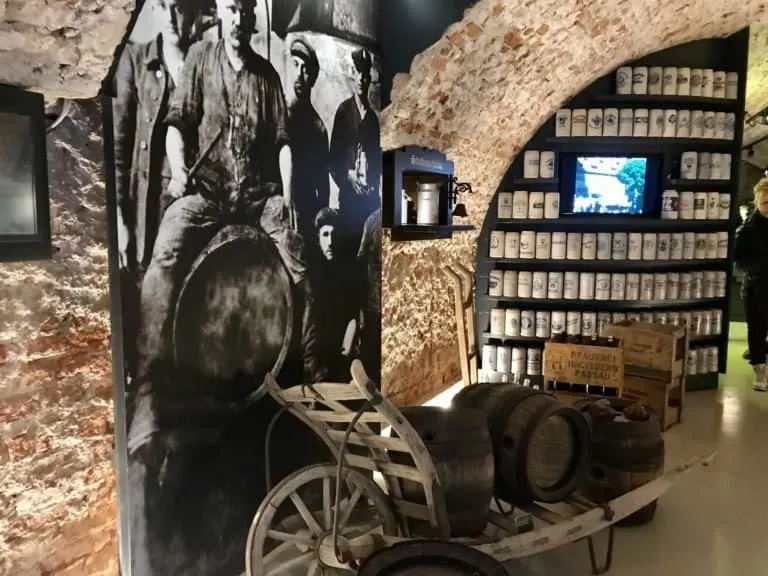
Vilshofen Beer Cave | Photo by LiLing Pang
Smaller medieval German towns like Regensburg, Vilshofen, and Passau exude charm and rich beer brewing heritage. If you’re a fan of Bratwurst sausages, you’ll find a different style of sausage in each town.
3. Scenic Bike Rides
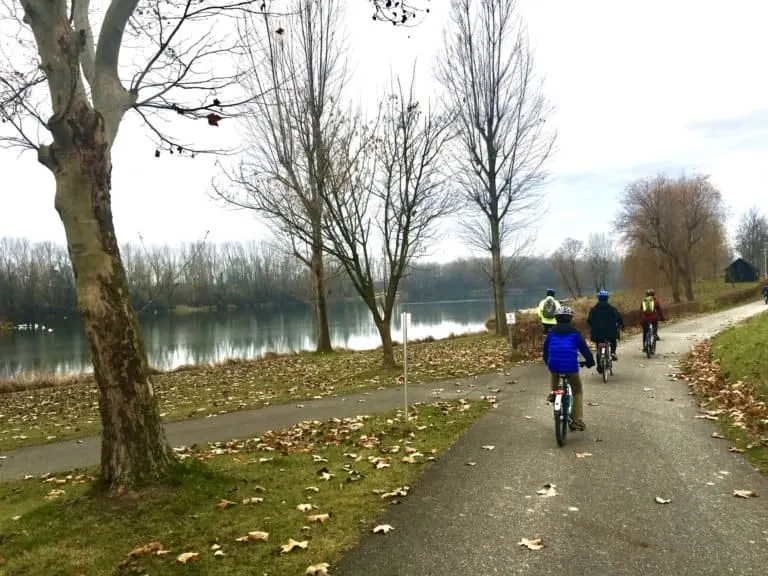
Biking along the Danube River with Ama Waterways | Photo by Brennan Pang
The most scenic portion of the Danube Cycle Path runs from Passau Germany to Bratislava, Slovakia. A total of 410km (254 miles). Some river cruise ships, carry bikes onboard and organize guides bike rides along the most scenic sections of the Danube Cycle Path.
4. Scenic Fairy Tale Villages and Vineyards
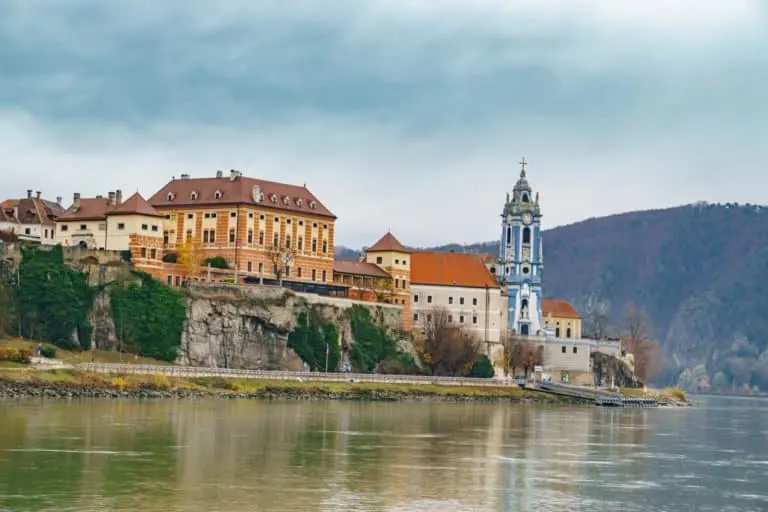
Wacahu Valley Upper Danube River | Photo by Brennan Pang
The beautiful Wachau Valley is lined with bucolic villages, castles, vineyards, abbeys, and cathedrals. The romance of the Upper Danube was captured by the composer, Johann Strauss, in his masterpiece “The Blue Danube”. Although the beautiful Blue Danube is actually green, its grandeur has undoubtedly inspired many others like Mozart, Beethoven, Bartók, Schubert, Liszt, and Haydn as well.
5. Pay Homage to The Sound of Music

Mozart’s birth home in Salzburg | Photo by LiLing Pang
If you’re a fan of the musical, The Sound of Music, a day trip to Salzburg, Austria is a must. Salzburg was the hometown of the Von Trapp family, and you’ll recognize many scenes from the musical. To Austrians, Salzburg is more famous for being the birthplace of the renowned composer Wolfgang Amadeus Mozart.
6. Vienna, The City of Music
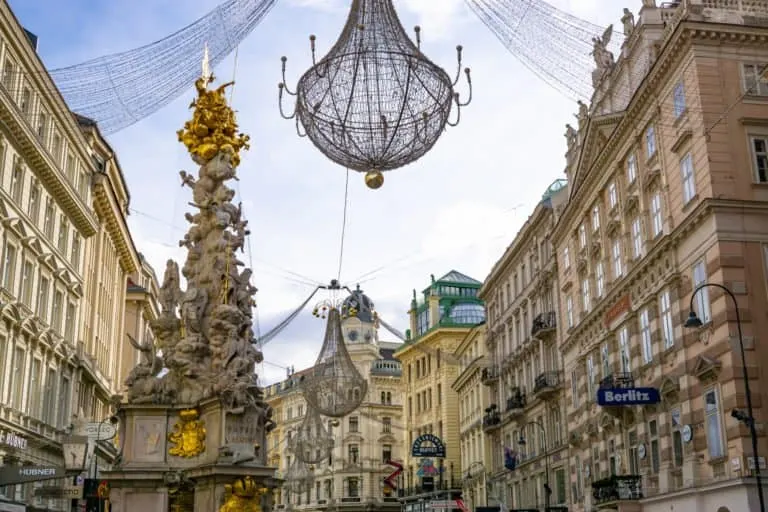
Vienna at Christmas Time | Photo by Brennan Pang
The iconic city of Vienna, Austria is one of the most beautiful and sophisticated cities in Europe. It is certainly a mecca for any budding or accomplished classical musician. During an Upper Danube river cruise, you’ll have several opportunities to enjoy classical music concerts in various venues from medieval churches to grand palaces. Some sailings have a special focus on music.
7. Budapest, The City of Waters
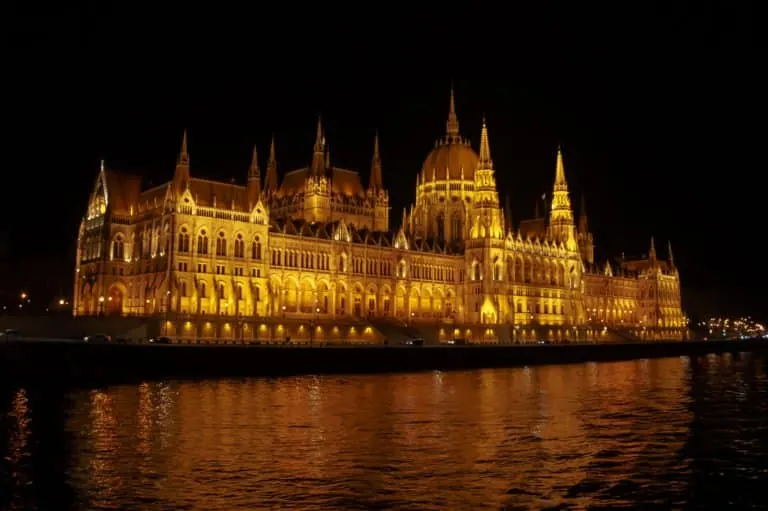
Budapest Parliament Building at Night | Photo by Brennan Pang
Budapest is the largest city on the Danube. The river cuts right down the center of Budapest offering some of the most magnificent architecture along the banks of this great river. The Budapest Parliament Building by night is probably the most iconic image along the Danube. A visit to Budapest would not be complete without a nice long soak in one of the traditional Budapest baths.
8. Christmas Markets on the Danube

Christmas Market in Salzburg, Austria | Photo by LiLing Pang
From late November through December, German, Austrian, and Hungarian Christmas Markets spring up in every small town and city. Each market has it’s own unique character, and handcrafted ornaments and gifts that are one of a kind. The Christmas Markets of the Danube are a magical experience if you want to soak in the Christmas spirit.
6 Reasons to Sail the Lower Danube River
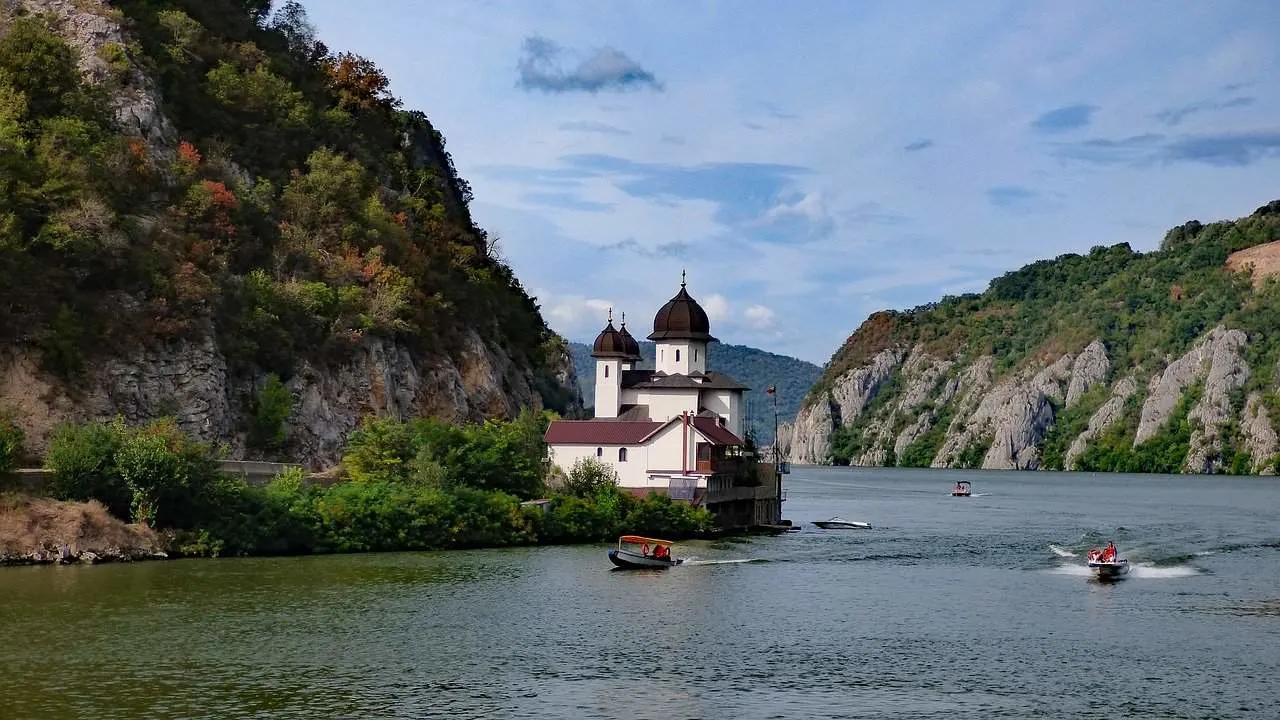
Iron Gates Lower Danube in at the boundary of Romania and Serbia | Photo by ArvidO
The Lower Danube is bookended by Budapest and Bucharest, Romania. If you’re taking a lower Danube River cruise, you’ll begin on either end.
1. Dig Deep into World History
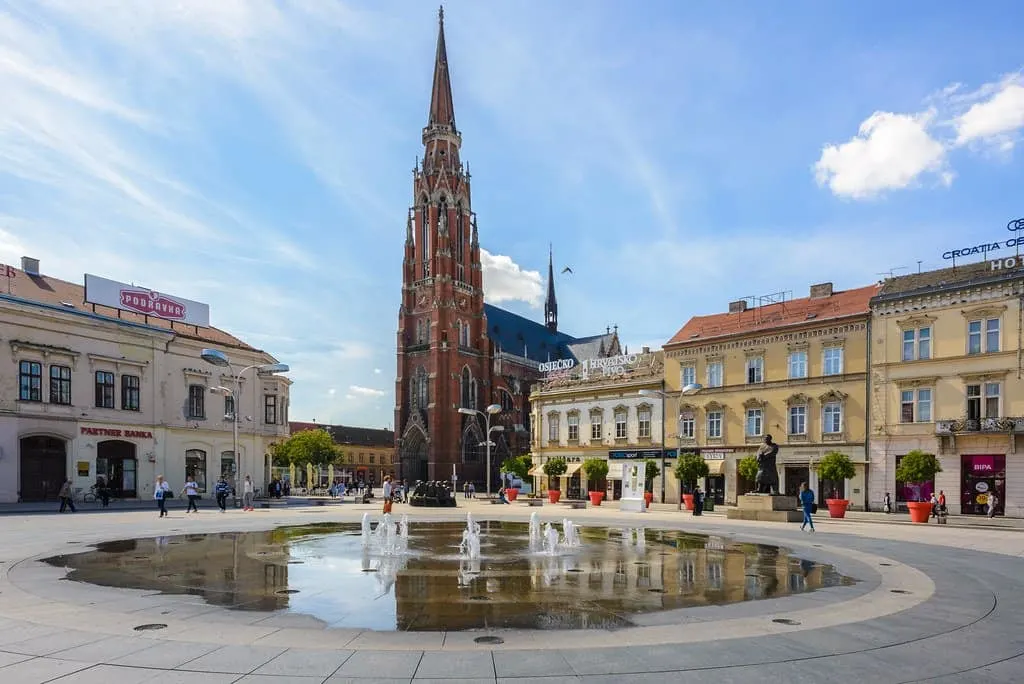
Osijek in Hungary | Photo by Nick Savchenko
The banks of the Danube have long tales to tell of migrating people and traders, conquering empires, and the spread of Christianity, Islam, and Communism. Layered on top of Roman ruins are Celtic and Ottoman fortifications. Medieval towns bare the distinctive imprints of Soviet-era communist influences.
The stops between Bucharest and Budapest are definitely off the typical tourist route. Vukovar,Osijek, Belgrade, Vidin, Russe are unlikely to draw images to your mind. But if you’re a history junkie you’ll find a journey through these emerging post-communist Balken towns full of complex history. Be ready to engage with some of the stark realities of world politics, war, and ethnic tensions.
2. Rare Wines You Won’t Find Back Home
Wine connoisseurs can taste their way through the centuries-old wine growing region of Llok that dates back to the Roman empire.
3. Belgrade, the Capital of Serbia
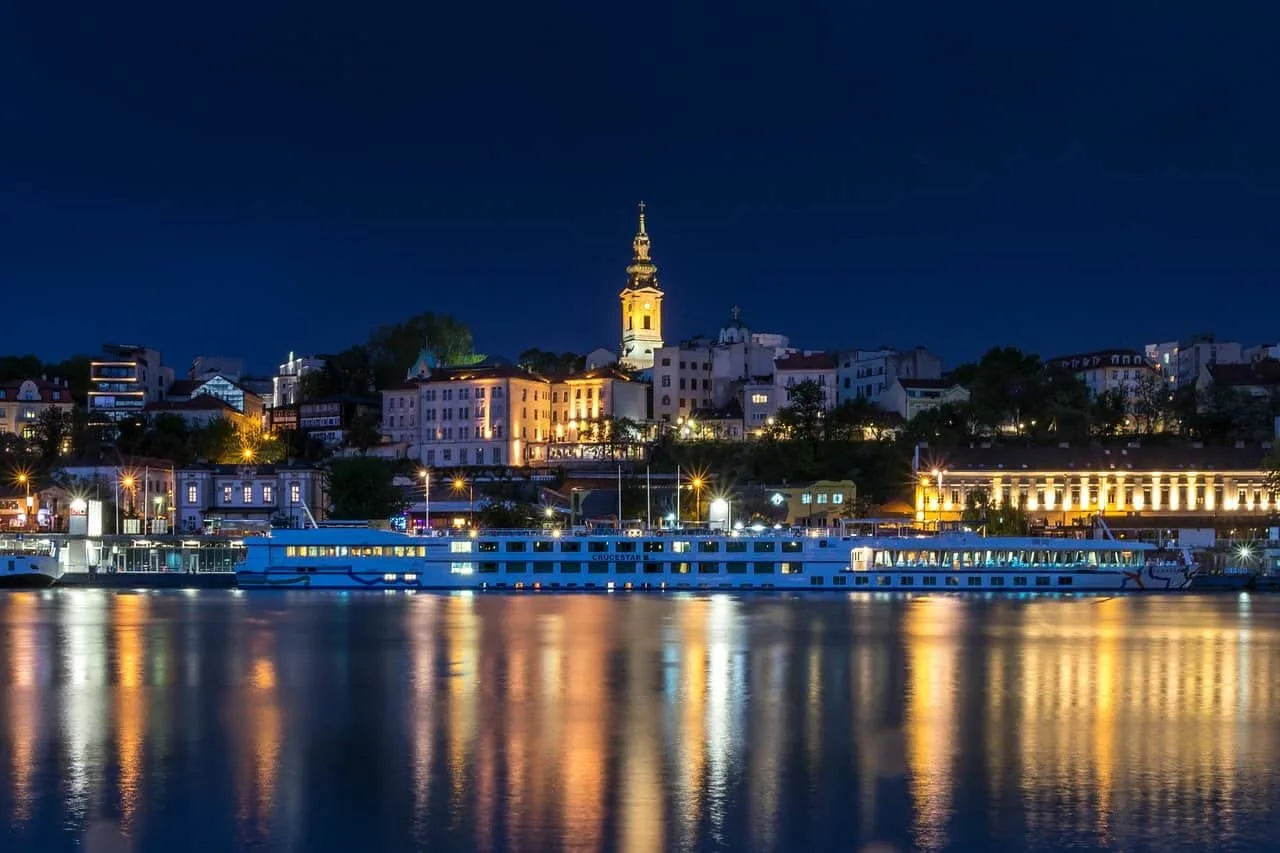
Belgrade Capital of Serbia by night| Photo by stevanaksentijevic
Belgrade, Serbia was once the capital of the former Yugoslavia. It’s a city with a turbulent past, but also one of the oldest cities in Europe with a charming old town area.
In Belgrade, Church of St. Sava is one of the oldest churches still under construction. The first stones were laid for this grand Serbian Orthodox temple back in 1935. But interruptions in construction due to war and the rise of communism prevented the completion of it’s exterior until recent years. The interior is still a work in progress.
4. The Iron Gates – A Magnificent Scenic Gorge
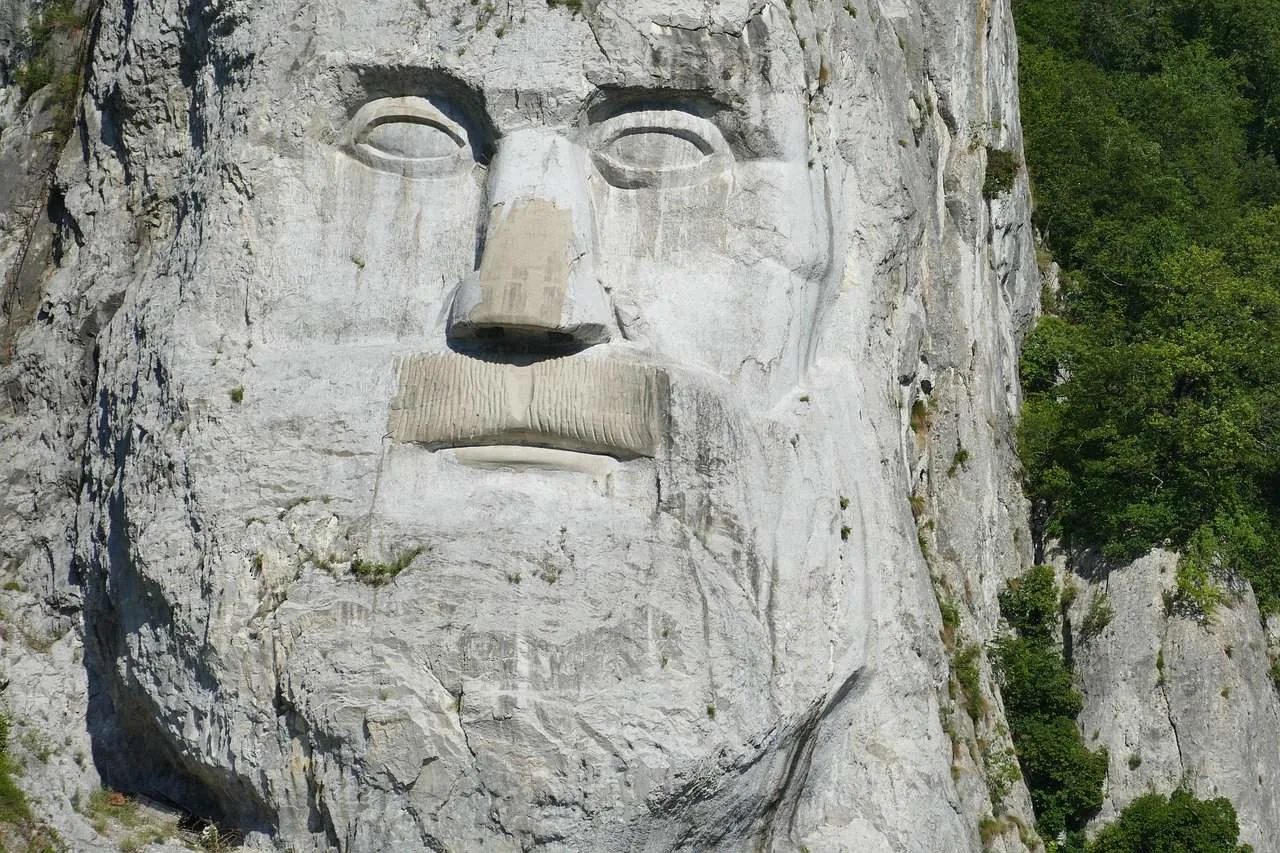
Iron Gates Gorge – Kalocsa, Hungary | Photo by falco
As the Danube enters the Iron Gates the river narrows into a scenic gorge flanked by the Carpathian Mountains and Balkan Mountains. This gorge marks the boundary between Serbia and Romania. All say it’s the most impressive scenic stretch of the Lower Danube.
5. Hike the Grand Belogradchik Rocks and Fortress
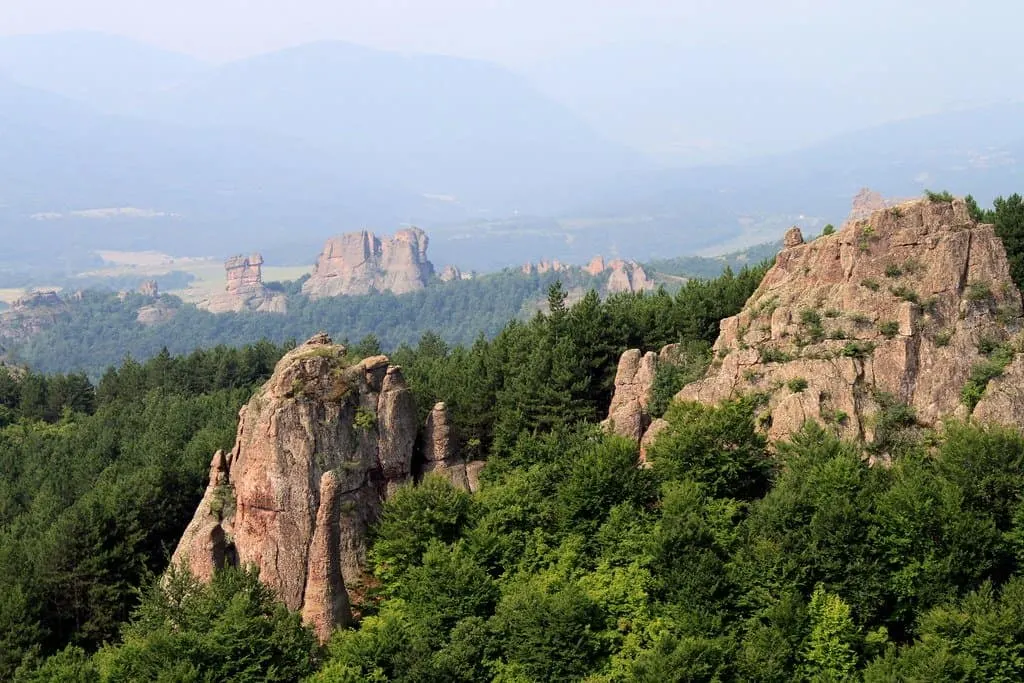
Belogradchik Rocks | Photo by Alesist
Nature lovers and hikers will be very impressed by Bulgaria’s awe-inspiring Belogradchik Rocks and Fortress.
6. Bucharest, The Paris of the East
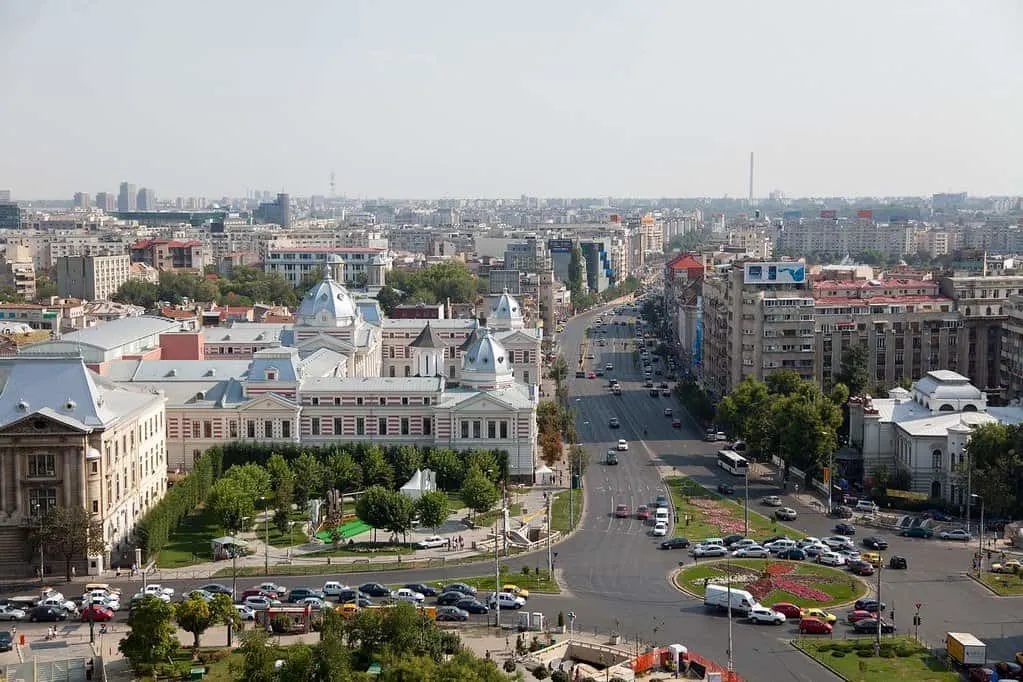
Bucharest, Capital of Romania | Photo by Aleksandr Osipov
Bucharest, the capital of Romania, is a historic city that is working hard to put its decades of grim history behind it. Although it’s still a little rough around the edges, it has some impressive classical architecture and scores of beautiful parks. Stay an extra day and make the one hour drive to see Count Dracula’s castle in Transylvania.
*Disclosure: Many thanks to Ama Waterways who hosted our family to experience the beauty of the Danube River and help families to unpack what they can expect on a river cruise on the Danube.
- Over 25 of the Best Things to do in Turks and Caicos! - March 12, 2024
- Over 20 Fun Things to do in Park City, Utah in Winter - February 15, 2024
- Best Lake Tahoe Ski Resorts for Families [And the Best Season Pass!] - December 28, 2023

